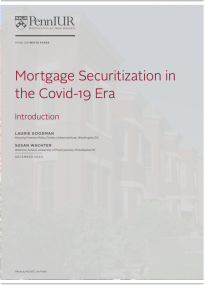Key Message
The authors introduce and establish the essential role of federal support in stabilizing the housing finance system during the COVID-19 pandemic. Key interventions, including Federal Reserve policies, the CARES Act, and enhanced loss mitigation efforts, have been instrumental. However, the introduction identifies the missing element of streamlined refinancing, which was highly effective during the Great Financial Crisis but not incorporated into the current policy response. The authors argue for the reintroduction of a streamlined refinance program to enhance monetary policy transmission, improve borrower positions, and reduce mortgage default risks.
Additionally, the proposed 2020 FHFA capital rule for the GSEs is critiqued for misapplying a Basel-like banking capital regime, which could lead to higher mortgage rates and a less stable housing finance system. The authors advocate for a more tailored capital framework that aligns with the GSEs' risk profiles and public missions. The introduction sets the stage for the subsequent papers in the volume, which offer detailed analyses and recommendations for enhancing the resilience and effectiveness of the housing finance system during and beyond the COVID-19 era.


